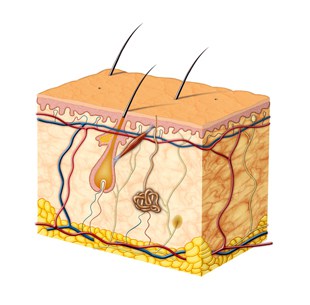Retinoic Acid (Tretinoin or ATRA) for Skin Rejuvenation
About Retinoic Acid
Retinoic acid, or tretinoin is the acid form of vitamin A and is also known as ATRA or all-trans retinoic acid. The most significant and well-researched topical anti-acne and anti-wrinkle agent, its cosmetic effects include reducing fine wrinkles, smoothing rough skin and lightening brown spots. It is currently available as a cream or gel only on prescription for treating established damage. Brand names include Airol, Atralin, Aberela, Avita, Retin-A, Renova, and Stieva-A.
How Does Retinoic Acid Work?
Retinoic acid is easily absorbed by the skin cells and helps to prevent the onset of wrinkles, dark spots and other signs of aging by regulating cell production. Retinoic acid can also stimulate new collagen formation in the skin. Although retinol is also a vitamin A, it first has to be converted into retinoic acid before it can be absorbed by the skin – hence the efficacy of creams that contain retinoic acid supersedes preparations that contain retinol as the primary ingredient.
Retinoic acid can be extremely irritating and drying on the skin when used in large does and therefore should only be used in prescription monitored amounts for short periods of time. Retinoic acid also thins the top layer of your skin the stratum corneum, which leads to its ‘smoothing effects but it may result in increased water loss (dehydration).
How Much Retinoic Acid Should I Use?
Only the prescribed amount should be applied to a clean skin. Dosage is dependent on the severity of the condition that the product has been prescribed for. This kind of cream should be used once a day in order to see conspicuous clinical results. Due to possible side effects of light sensitivity and redness it is best used in the evening and you do need to avoid direct sunlight on your skin once you have commenced use – another case for using sunscreen as part of your daily skincare routine.
What Concentration of Retinoic Acid Should I Use?
Creams for a normal skin type will contain 0.05% of retinoic acid while products manufactured for people with sensitive skin will contain 0.025% of the ingredient.
Can I use Retinoic Acid with Other Products?
Moisturizers can be used with retinoic acid preparations; however, they are not needed because the substance is enough to promote the production of collagen across the skin layer, reduce the thickness of the epidermis and rejuvenate the skin giving the user a youthful and radiant glow. As the skin is introduced to retinoic acid there may be initial redness, sensitivity and flakiness as cell production increases and a moisturizer may be required to comfort the skin.
How Can I Keep my Investment to a Minimum?
Retinoic acid prescriptions may be used for a short period to give the skin a renewal boost and then a more affordable long term option of using retinol can be gentler on the skin. Only a small number of topical antioxidants have been shown in clinical trials to reduce signs of skin aging and wrinkles.
Retinoic Acid and Retinol
Retinol is widely used in over the counter skin creams. To become active retinol must be converted into retinoic acid. This is a very inefficient process and so the activity of products containing retinol is far less than retinoic acid. For best results, select a product with a high-concentration of retinol or ones that have been specifically stabilized to prevent degradation with light and time.






